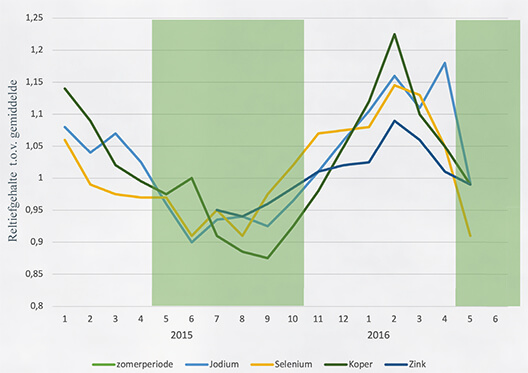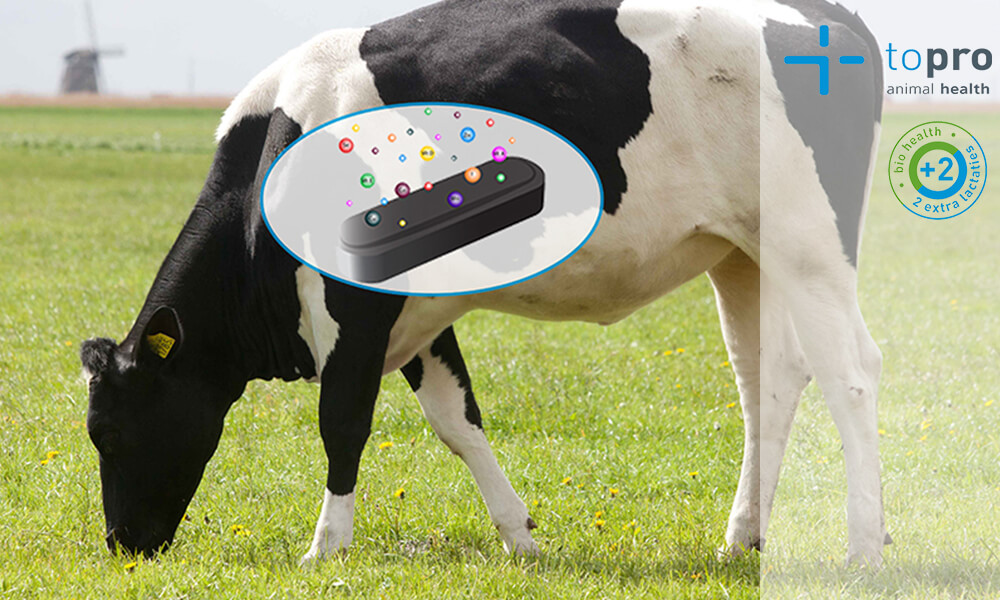Prevent health risks in pasture
Modern pasture grass is generally deficient in essential trace elements, like copper, selenium and cobalt. Also, the uptake of trace elements depends on the soil type. The uptake of copper and selenium is lower on peat and sandy soils, due to the presence of larger concentrations of sulphur and iron. To avoid health and growth issues in the pasture season, it is wise to supply your animals with additional trace elements.
The most important mineral requirements for youngstock are given in Table 1. These requirements depend on growth rate and body weight.
Table 1: Average trace elements requirements for youngstock (mg/animal/day)
| Body weight(kg) | Magnesium | Copper | Cobalt | Zinc | Manganese | Selenium |
| 130 (4 months) | 6.7 | 56 | 0,4 | 111 | 98 | 0,40 |
| 260 (9 months) | 10 | 92 | 0,6 | 143 | 140 | 0,62 |
| 400 (16 months) | 14 | 132 | 0,7 | 183 | 183 | 0,87 |
Source: Tabellenboek Veevoeding Herkauwers 2016
Analyses of the Dutch Animal Health Service (GD) reveal that during the summer season – when cows are often outdoors – the levels of trace elements in the blood decrease (Figure 1). Animals in pasture consume less feed in the barn, and, therefore, take up less trace minerals.

Figure 1: Relative concentrations of trace elements in tank milk per month; average = 1 (Source: GD)
A proper mineral supply will ensure healthy youngstock and cattle in pasture, but also positively affects fertility and the unborn calf. In general, it can be stated that the health status improves with the right mineral supply and metabolism!




